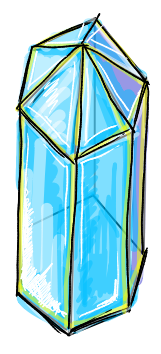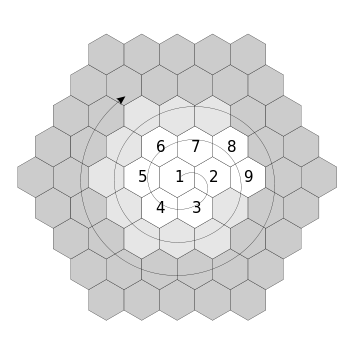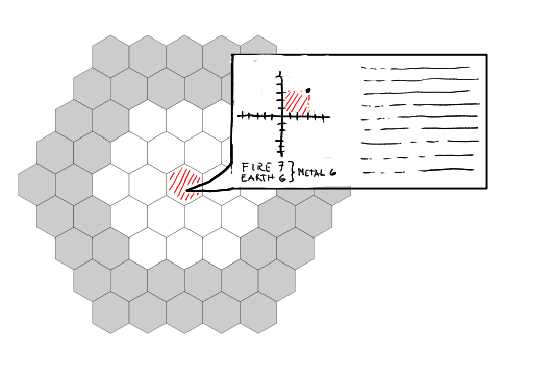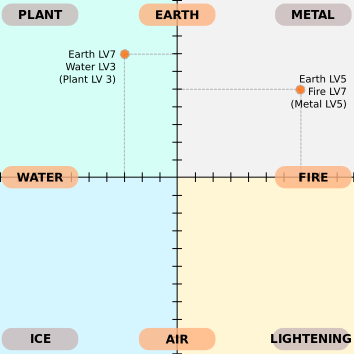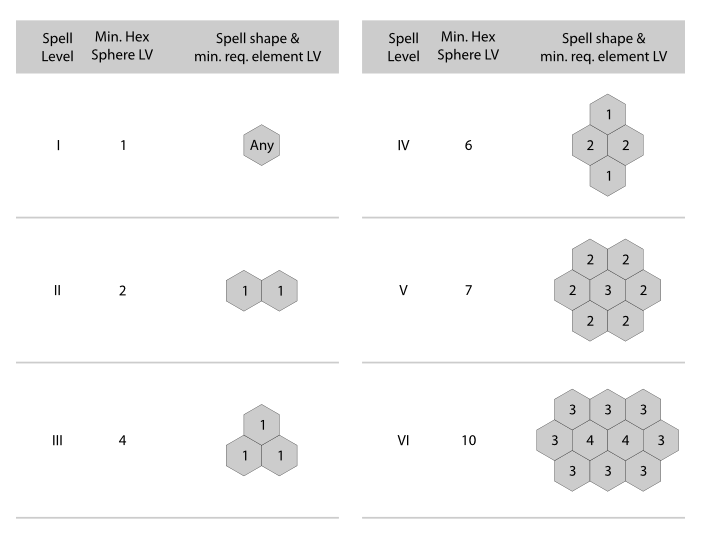Hex Sphere System
Introduction to Hex Sphere System
About HSS
The author of the HSS concept is Krzysztof Daszuta (irukard@gmail.com). All documentation is licensed under the GNU General Plublic License v2 with reservation that any implementation of this idea is derived work and according the license should be distributed under the same conditions. In another case, please contact the author asking for a commercial license.
Many people probably remember the sleepless nights spent on playing the Final Fantasy series. In each part of the Final Fantasy, system of magic and skill is fundamentally different. Sometimes differs in some details, in other cases it's drastically different - based on a completely different rules, even spited from the old mechanics of which by a number of factors we could get used to. As the series of games, under one sign, FF is an excellent material that can be used as model to follow.
Hex Sphere System is the result of such analysis - is also a proposal for solving skills system (including magic), in way that the new system would be nontrivial and does not lead to the creation of characters that can do everything. The system forces profiling towards one or maybe two elements - whether it is a magic defensive, offensive, support or manufacturing skills, etc.
Skills (including magic) are stored in Crystals with hexagon base. The idea is similiar to well known Materia from FF7. The crystal is just a container with following features:
- type (name of skill)
- element (or absence of one)
- level (and of course EXP)
With crystal level also changes some other features such as:
- shape (amount of hex on Hex Sphere)
- sphere base requirements (soil profile)
- static neighborhood influence
- resonances - direct, neighborhood and global
The level of the crystal determines the strength (power) of a given skill. Modifies cast time, and the amount of mana consumed, etc. Generally accepted principles of skills mechanics are typically in most cases here.
In order to use a spell or skill crystal must be placed on the sphere. Crystal is just an ordinary object and can be sold / bought (except for crystals permanently linked with the owner - Soul Bind). When the crystal accumulates enough experience to the next level, it will no longer get experience and provides the option of raising it's level. This procedure is for the sake of economy of the game, if necessary, can be fraught with the likelihood of destruction of the crystal. But in current version it's unlikely to destroy crystal with LV UP procedure.
Every use of the crystal profiles the base of Sphere. Any use of it slightly shifts sphere in the direction of crystal's element. Consequently, the longer we use crystal in one place the better the results you get. The sphere interacts with the crystal, higher soil element level translates directly in better crystal performance. This rule also applies in the opposite side. If the crystal is placed on the "hostile" fields on sphere, the environment it affects it in a negative way - increasing mana consumption, extending cast time and reducing its effectiveness.
Hex Sphere
Sphere in HSS consists of 61 logically interconnected hexagons that what is important in case of need to build much more complex system may be extended for another few or even dozens. As the player gains more experience through crystals usage - the overall level of sphere rises. It should be noted that the sphere has its own level, completely independent of the level of player. If player does not use any skills at all, the LV of Sphere remains the same.
The level of the sphere determines the amount of unlocked fields. Unlocking occurs according to the scheme shown in the figure. Spiral in a clockwise direction. This is the optimal way to ensure a satisfactory number of fields and limiting the ability to use high-level skills at a relatively low sphere level. Each field contains a information about the current element profile.
Elements
The number of elements and their mutual relations can be arbitrary. For obvious reasons should be as small as possible (in range 3-5 the main elements). For the purpose of the system, I decided to use an example taken from The Mana World, which assumes the existence of four main elements, and 4 sub-elements resulting from their combination. This is an example complex enough to fully demonstrate the potential HSS system.
Illustration here shows a graphical representation of each element. Axes assume the possibility of development of each element to level 10. The level of the derivative element is assumed to lowest level of base elements (as shown in the figure). Each main element is neutral for two sub-elements on it's side and strong in the attack against the other sub-elements.
Example: Water is neutral for Ice and Plant but deadly for Metal and Lightening.
Main elements located opposite each other endure its effects. It symbolizes the eternal battle of the elements. In this case the advantage has the element whose level is higher.
Example: Water extinguishes Fire, Fire evaporates Water.
Main elements are strong in a clockwise direction: Air → Fire → Earth → Water → Fire, in the opposite direction are weak.
Sub-elements should be considered as sum of the main elements. The best analogy is Kamikaze. Sub-element is very strong in attack against opposite one, while being very week in defense. And in relation to sub-elements on side, because of one common component, the attack and defense are halved.
Profiling sphere ground
To be able to talk about the phenomenon of sphere ground profiling, it should be explained that not every crystal can be put into the sphere. This is dictated by the fact that all the crystals of the levels above the first have minimum requirements, which include a ground level, which must be at the appropriate minimum level of specified element.
The shape of the crystal and the minimum requirements are illustrated in the table below.
The first column includes the level of the crystal, in the next a minimum level of sphere needed to inject the crystal (amount of needed space). In the third column, we see the shape of the crystal on a certain level. Digits appearing within individual hexagons tell us about the minimum requirement to the element level on sphere ground. When these conditions (amount of need space and ground level) are not met, the crystal can not be inserted into the sphere. We must bear in mind that when artificially overstate the ground element level (whether by the neighborhood influence, or by using the appropriate modifier), we can inject a crystal, however, when these artificial conditions cease, and the sphere ground profile at a given location is not sufficient, the crystal will be automatically ejected and will not be able to use it.
The shape of the crystals at given level has been thoroughly examined in order to allow their free development.
One of the tasks of this system is guiding player trough system mechanics. At the beginning the player start injecting everything he finds in game. However after short time player realizes that the way to build a strong form leads only by broadly defined specialization in the direction of one or maybe two - compatible with each other - elements.
Such a system provides many interesting logistics riddles. One of them is planning for the future development and profiling the appropriate fields for the new higher level crystals. At stake is not just the level of crystal and ground, but also its placement on sphere and free space around it.
The crystal evolution procedure is presented in more detail in a later chapter. In order to level up, player have to complete the next level shape using blank crystals. So crucial is free space around crystal and sphere ground level below blanks.
